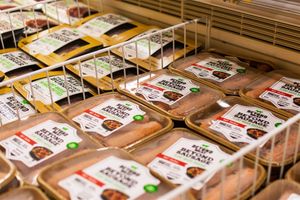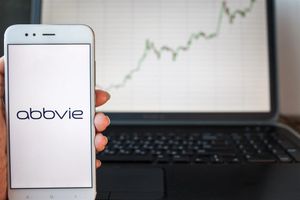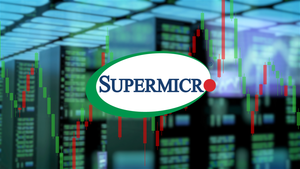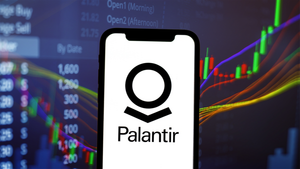
Government and sustainable technology solutions company KBR (NYSE: KBR) announced better-than-expected revenue in Q4 CY2024, with sales up 22.7% year on year to $2.12 billion. The company expects the full year’s revenue to be around $8.9 billion, close to analysts’ estimates. Its non-GAAP profit of $0.91 per share was 11.4% above analysts’ consensus estimates.
Is now the time to buy KBR? Find out by accessing our full research report, it’s free.
KBR (KBR) Q4 CY2024 Highlights:
- Revenue: $2.12 billion vs analyst estimates of $1.99 billion (22.7% year-on-year growth, 6.7% beat)
- Adjusted EPS: $0.91 vs analyst estimates of $0.82 (11.4% beat)
- Adjusted EBITDA: $228 million vs analyst estimates of $219.3 million (10.7% margin, 4% beat)
- Management’s revenue guidance for the upcoming financial year 2025 is $8.9 billion at the midpoint, in line with analyst expectations and implying 15% growth (vs 11.3% in FY2024)
- Adjusted EPS guidance for the upcoming financial year 2025 is $3.83 at the midpoint, missing analyst estimates by 0.8%
- EBITDA guidance for the upcoming financial year 2025 is $970 million at the midpoint, above analyst estimates of $961.6 million
- Operating Margin: 6.7%, down from 8.5% in the same quarter last year
- Free Cash Flow Margin: 1.9%, down from 3.6% in the same quarter last year
- Backlog: $17.26 billion at quarter end, in line with the same quarter last year
- Market Capitalization: $6.55 billion
"KBR delivered sustained performance throughout the year culminating in a strong fourth quarter, with significant revenue and earnings growth as well as margin expansion," said Stuart Bradie, President and CEO.
Company Overview
Known for projects like the construction of Guantanamo Bay, KBR provides professional services and technologies, specializing in engineering, construction, and government services sectors.
Defense Contractors
Defense contractors typically require technical expertise and government clearance. Companies in this sector can also enjoy long-term contracts with government bodies, leading to more predictable revenues. Combined, these factors create high barriers to entry and can lead to limited competition. Lately, geopolitical tensions–whether it be Russia’s invasion of Ukraine or China’s aggression towards Taiwan–highlight the need for defense spending. On the other hand, demand for these products can ebb and flow with defense budgets and even who is president, as different administrations can have vastly different ideas of how to allocate federal funds.
Sales Growth
A company’s long-term performance is an indicator of its overall quality. While any business can experience short-term success, top-performing ones enjoy sustained growth for years. Regrettably, KBR’s sales grew at a mediocre 6.5% compounded annual growth rate over the last five years. This fell short of our benchmark for the industrials sector and is a tough starting point for our analysis.
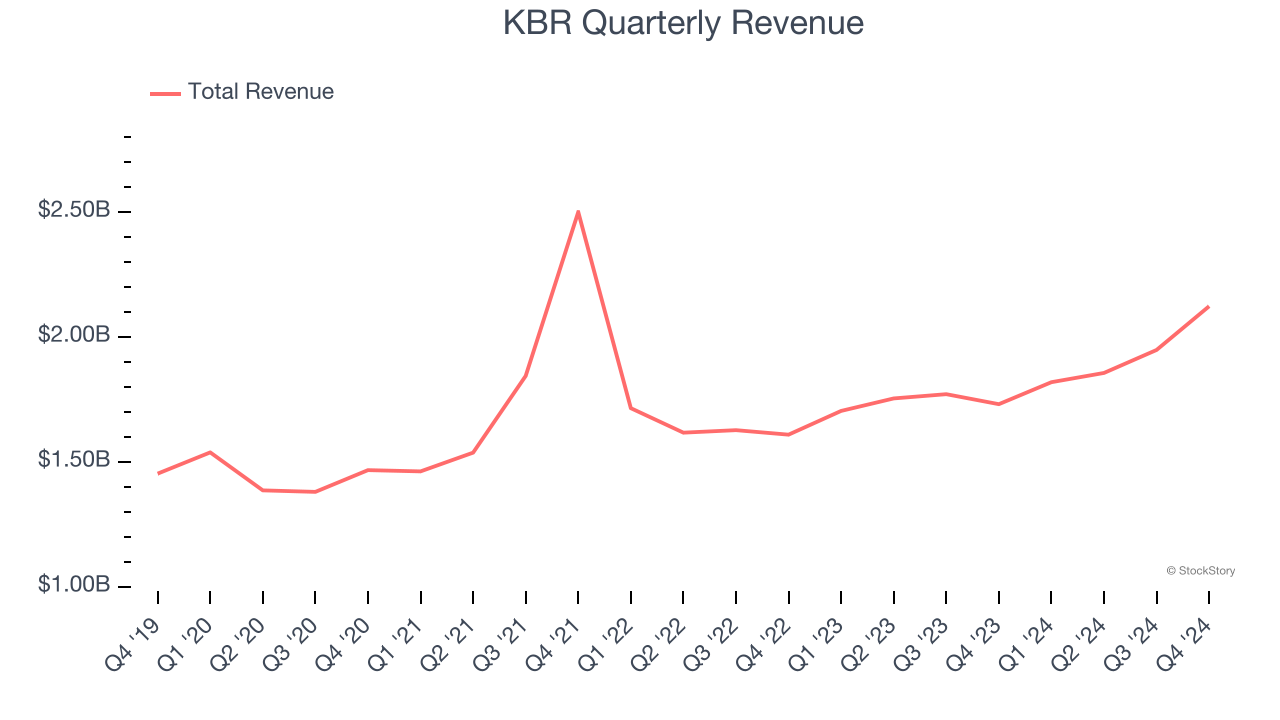
Long-term growth is the most important, but within industrials, a half-decade historical view may miss new industry trends or demand cycles. KBR’s annualized revenue growth of 8.6% over the last two years is above its five-year trend, suggesting some bright spots. 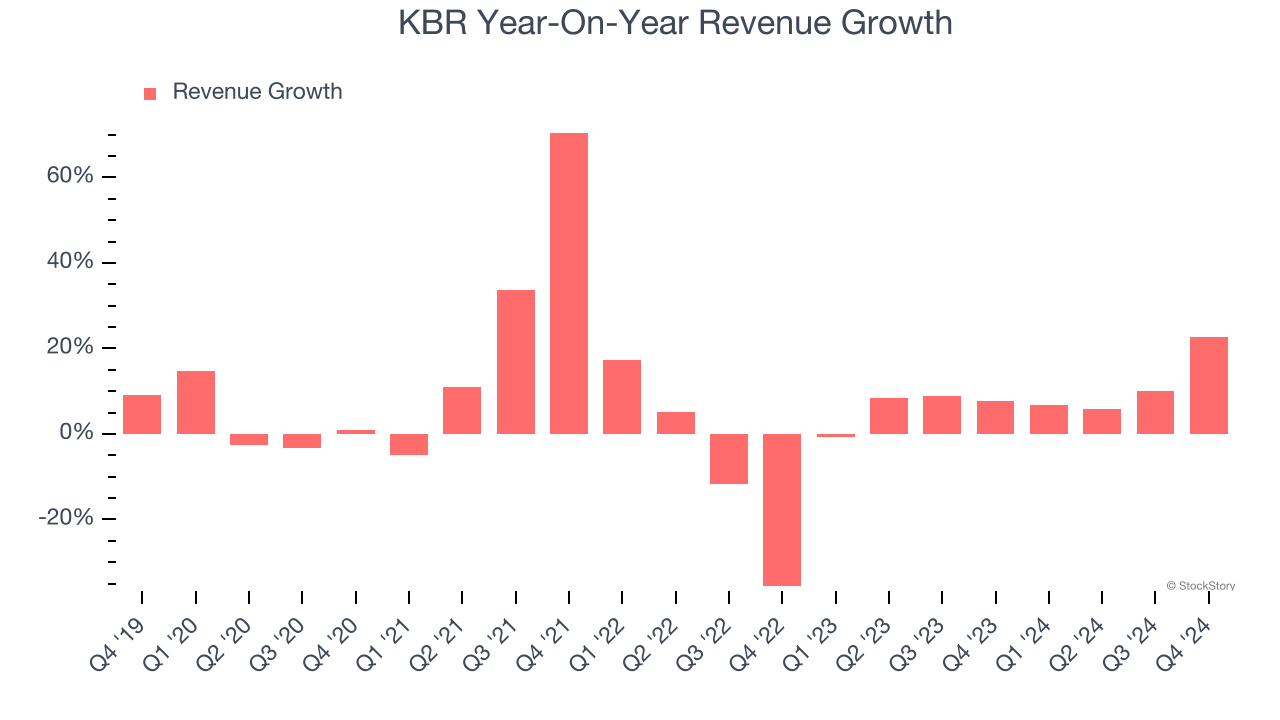
KBR also reports its backlog, or the value of its outstanding orders that have not yet been executed or delivered. KBR’s backlog reached $17.26 billion in the latest quarter and averaged 7.4% year-on-year growth over the last two years. Because this number is in line with its revenue growth, we can see the company effectively balanced its new order intake and fulfillment processes. 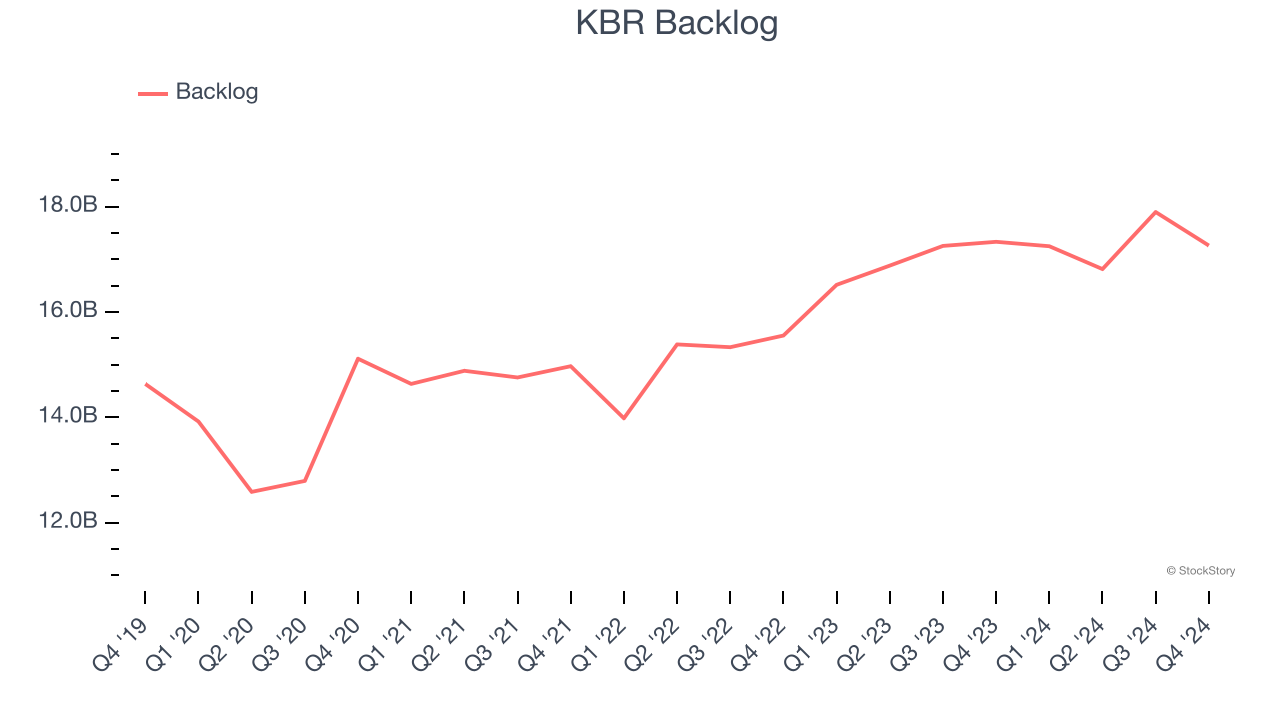
This quarter, KBR reported robust year-on-year revenue growth of 22.7%, and its $2.12 billion of revenue topped Wall Street estimates by 6.7%.
Looking ahead, sell-side analysts expect revenue to grow 13.3% over the next 12 months, an improvement versus the last two years. This projection is commendable and indicates its newer products and services will spur better top-line performance.
Software is eating the world and there is virtually no industry left that has been untouched by it. That drives increasing demand for tools helping software developers do their jobs, whether it be monitoring critical cloud infrastructure, integrating audio and video functionality, or ensuring smooth content streaming. Click here to access a free report on our 3 favorite stocks to play this generational megatrend.
Operating Margin
Operating margin is one of the best measures of profitability because it tells us how much money a company takes home after procuring and manufacturing its products, marketing and selling those products, and most importantly, keeping them relevant through research and development.
KBR was profitable over the last five years but held back by its large cost base. Its average operating margin of 5.1% was weak for an industrials business.
On the plus side, KBR’s operating margin rose by 7.6 percentage points over the last five years, as its sales growth gave it immense operating leverage.
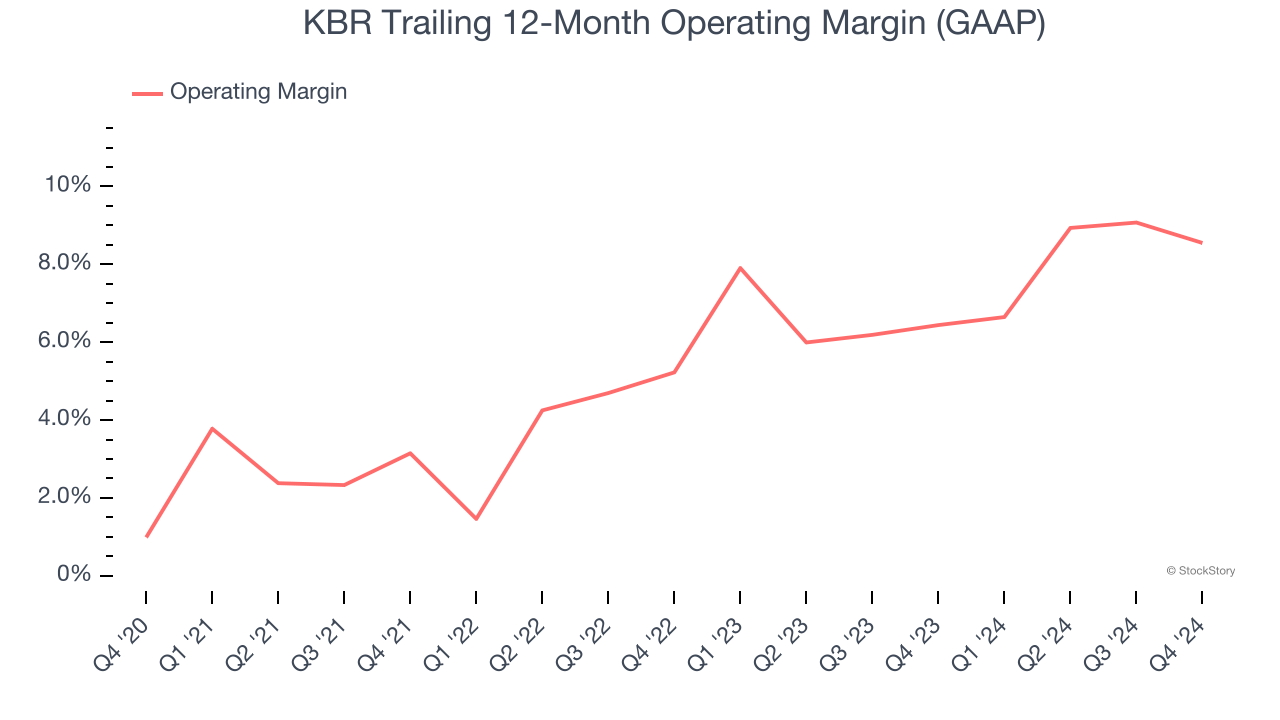
This quarter, KBR generated an operating profit margin of 6.7%, down 1.8 percentage points year on year. This reduction is quite minuscule and indicates the company’s overall cost structure has been relatively stable.
Earnings Per Share
We track the long-term change in earnings per share (EPS) for the same reason as long-term revenue growth. Compared to revenue, however, EPS highlights whether a company’s growth is profitable.
KBR’s EPS grew at a spectacular 14.8% compounded annual growth rate over the last five years, higher than its 6.5% annualized revenue growth. This tells us the company became more profitable on a per-share basis as it expanded.
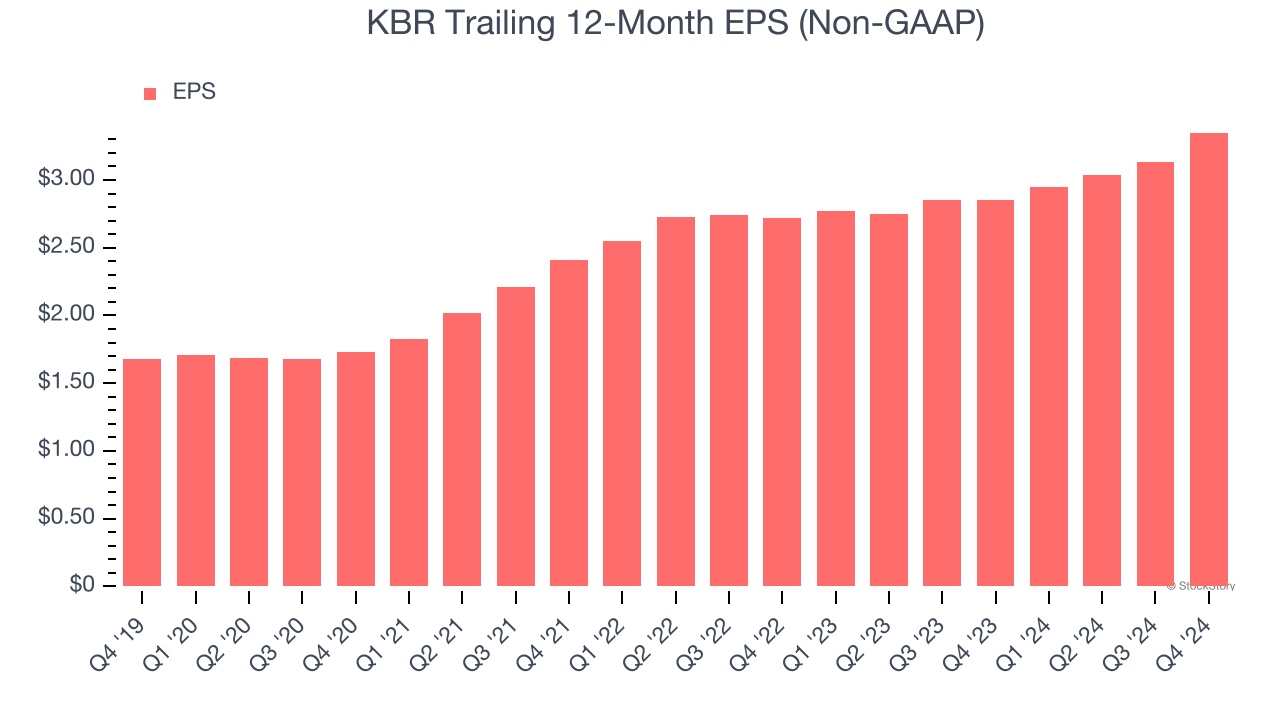
We can take a deeper look into KBR’s earnings quality to better understand the drivers of its performance. As we mentioned earlier, KBR’s operating margin declined this quarter but expanded by 7.6 percentage points over the last five years. Its share count also shrank by 8.3%, and these factors together are positive signs for shareholders because improving profitability and share buybacks turbocharge EPS growth relative to revenue growth. 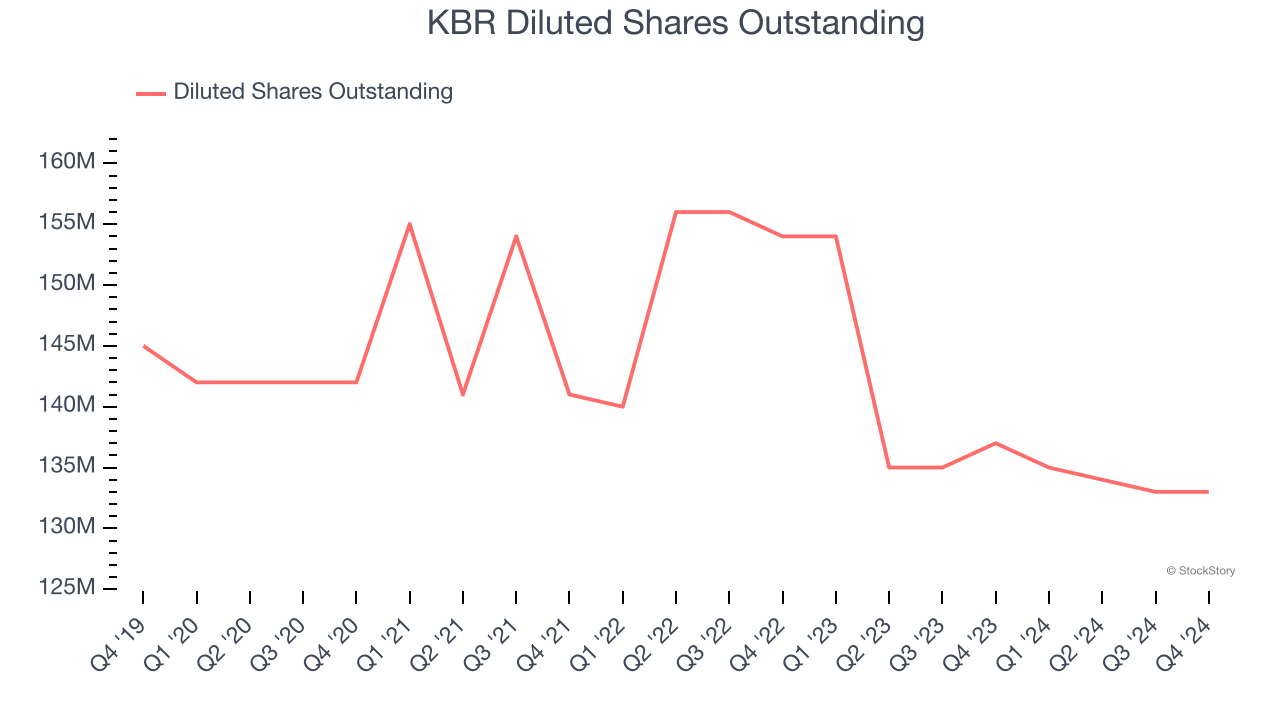
Like with revenue, we analyze EPS over a shorter period to see if we are missing a change in the business.
For KBR, its two-year annual EPS growth of 11% was lower than its five-year trend. We still think its growth was good and hope it can accelerate in the future.
In Q4, KBR reported EPS at $0.91, up from $0.69 in the same quarter last year. This print easily cleared analysts’ estimates, and shareholders should be content with the results. Over the next 12 months, Wall Street expects KBR’s full-year EPS of $3.35 to grow 13.8%.
Key Takeaways from KBR’s Q4 Results
We were impressed by how significantly KBR blew past analysts’ revenue, EPS, and EBITDA expectations this quarter. We were also glad its full-year EBITDA guidance outperformed Wall Street’s estimates. On the other hand, its backlog missed significantly. Still, this quarter had some key positives. The stock remained flat at $50.17 immediately following the results.
So do we think KBR is an attractive buy at the current price? When making that decision, it’s important to consider its valuation, business qualities, as well as what has happened in the latest quarter. We cover that in our actionable full research report which you can read here, it’s free.
